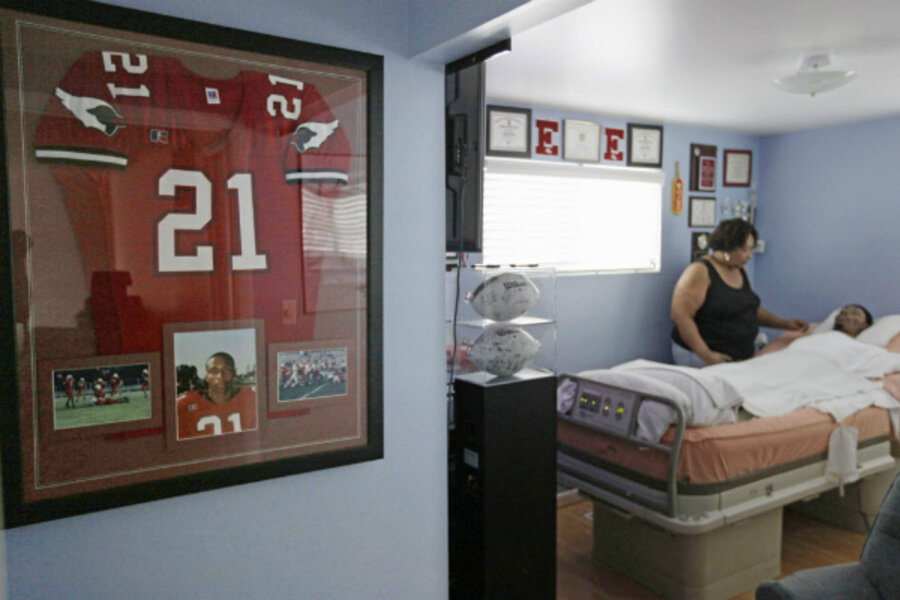Rocky's law: Illinois schools to carry catastrophic insurance for athletes
Loading...
In a tribute to high school football player Rasul "Rocky" Clark, who died last year of football injuries, Illinois is requiring all high schools in the state to offer catastrophic insurance coverage for student athletes.
Illinois Gov. Pat Quinn (D) on Sunday signed the bill, dubbed "Rocky's Law," which requires public and private high schools to provide a minimum policy covering $3 million in benefits or five years of coverage related to medical injuries resulting from the playing field.
Mr. Clark, who was paralyzed from the neck down after a game-time tackle in 2000, died last year, two years after being informed that the school district’s $5 million insurance plan was used up and the district no longer could afford his medical bills.
Governor Quinn called the law a "tribute" to Clark that is intended “to provide more comfort to sports families across Illinois.”
The mandate is unusual because typically high school districts are not required to cover student athletes who may suffer serious injuries. Instead, they shift the financial burden to the families.
Before they are allowed to take a step on the field, student athletes, cheerleaders, or even marching band musicians at the high school level are required to sign a waiver showing they understand the risks involved in the sport and to prove that they have their own accident insurance. If they do not, schools typically offer a low-cost plan of their own. These plans can be used to cover additional costs for parents who carry insurance for the kids, or they can cover primary costs, if the parents don’t have private insurance.
The Illinois mandate is part of a “growing trend where the rights of athletes are being considered at a far greater level than they ever were for what is clearly a violent activity,” says Warren Zola, a sports law professor at Boston College’s Carroll School of Management.
In the past, the frequency of injuries in contact sports has motivated insurance carriers to exclude sports from general liability policies. For school liability insurance to cover an injury, negligence would need to be proven, which opens up school districts to lawsuits. The Illinois mandate, says Mr. Zola, is a “byproduct” of past litigation in which there is “recognition that certain sports are more likely to cause injury over time.”
Mark Conrad, who teaches sports law at Fordham University in New York, says the Illinois mandate is “somewhat unusual” in that it creates many unknowns, such as the waiver process. For example, if students say they understand the risks of playing a violent sport and then get injured, how does that affect their benefits?
“There is always a great sensitivity by schools to the risks involved just because we’ve seen so many lawsuits,” Mr. Conrad says. “Rocky’s Law,” he says, is seen as a way of “controlling the risk in some way that is far more prevalent than in the past.”
The other unknown is cost. Experts agree that districts will see higher premiums, which might be more burdensome to schools with small enrollments as opposed to those in more populated areas with a wealthier tax base.
There is also the issue of defining catastrophe on the playing field: “We have no idea how the [federal] Affordable Care Act will affect this, if schools are going to determine [athletic injuries to be insured by] an accident policy or health coverage,” says David Livingston, an account executive with Roeding Insurance in Lexington, Ky., who specializes in insurance for schools.
“An accident policy doesn’t cover you if you have a cold, and if you blow out your knee while cheerleading, that might not be covered under health insurance,” Mr. Livingston says.







